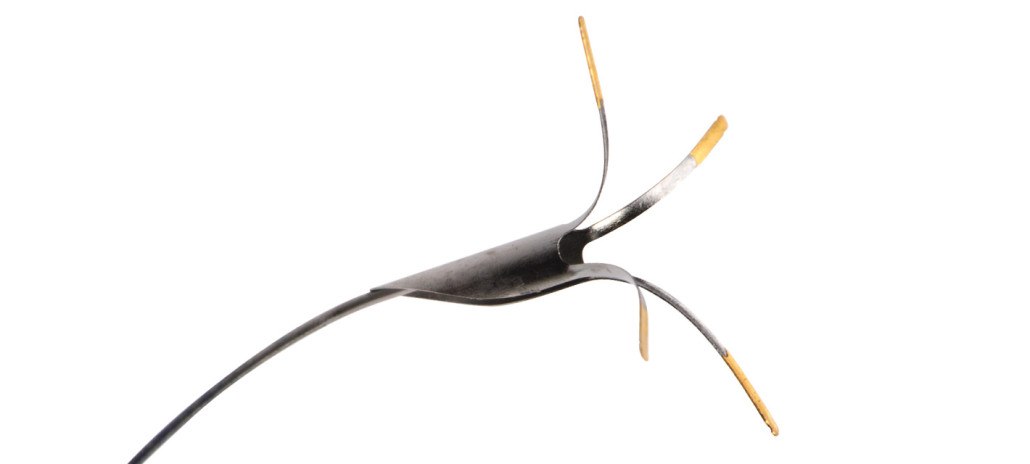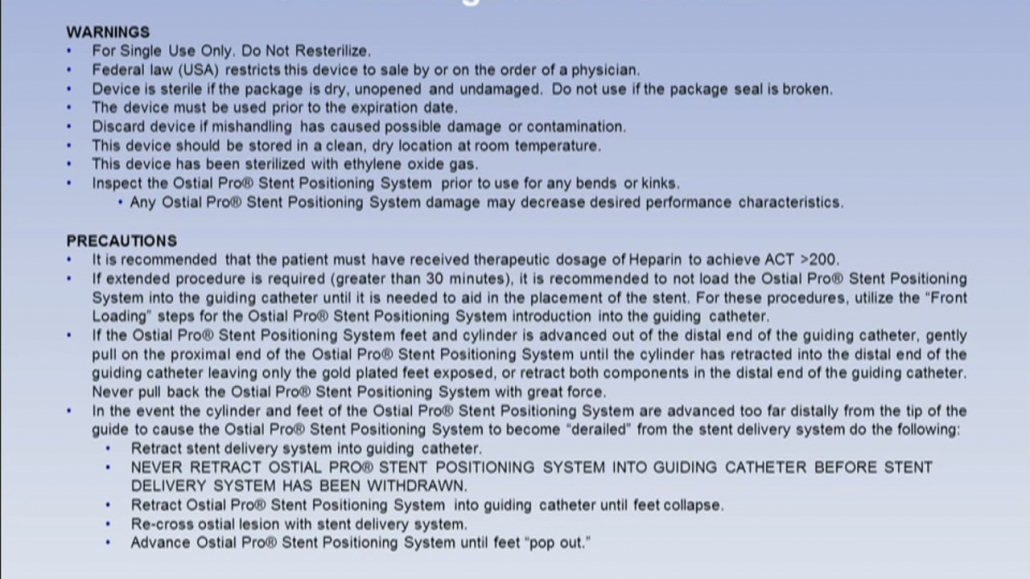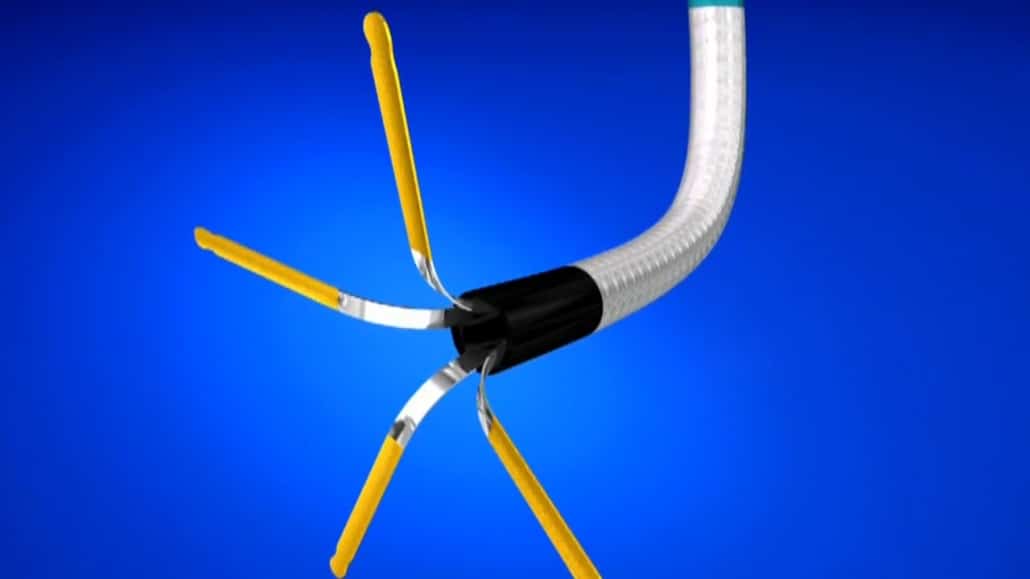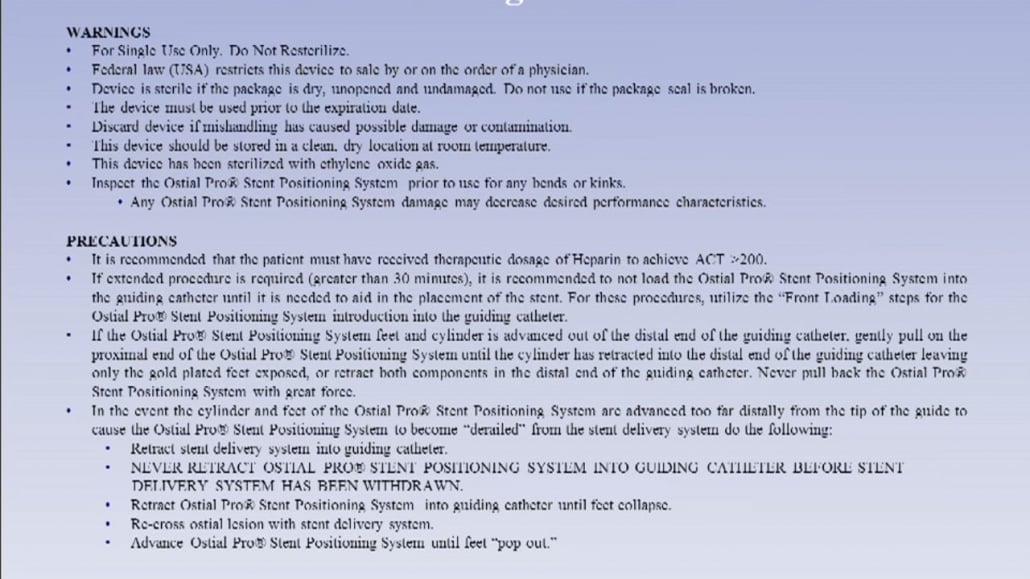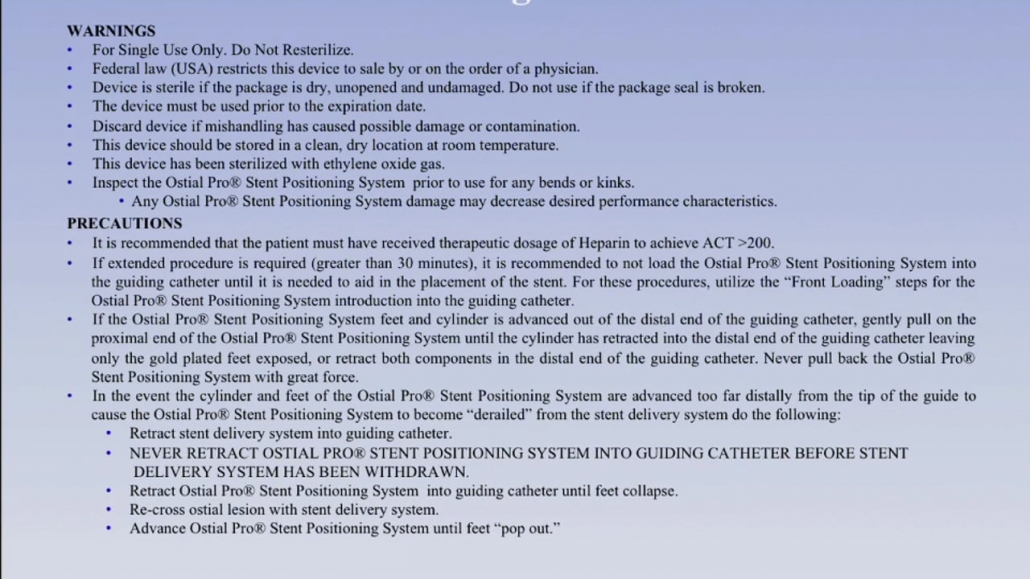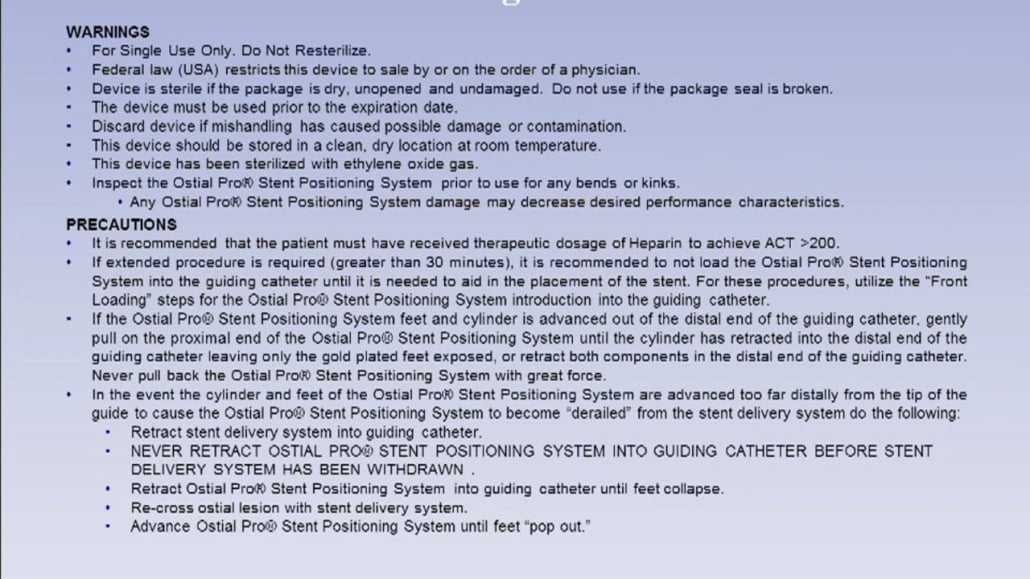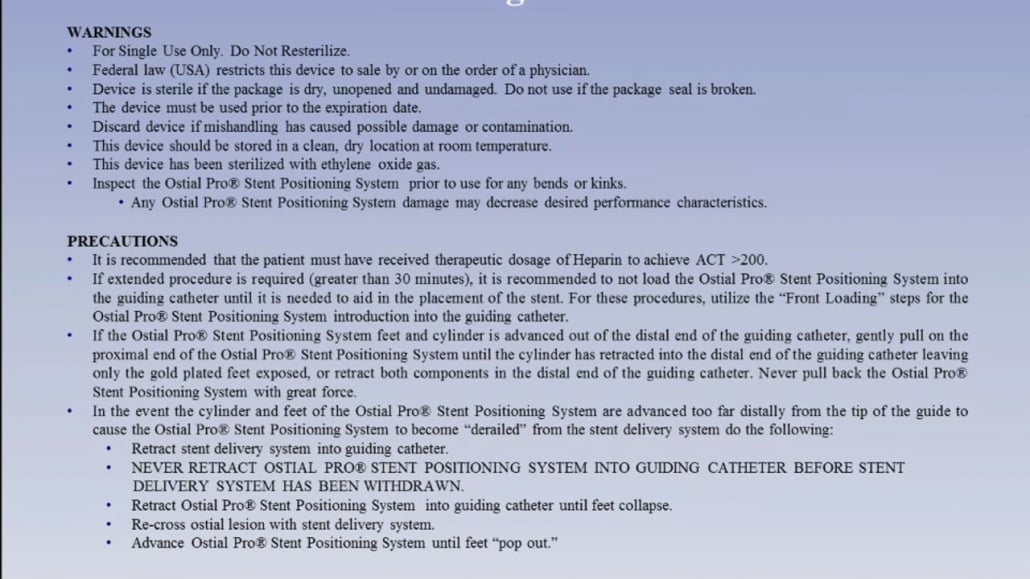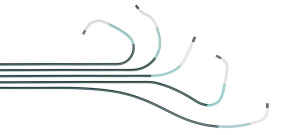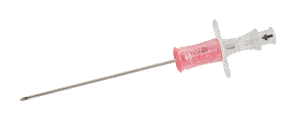Video Gallery
Features & Benefits
Yellow marker
permits positive identification and differentiation of the Ostial Pro® Stent Positioning System from other wires.
Nitinol wire
0.018 inch wire allows greater pushability and strong pullback capabilities.
15 mm leg span
accommodates ostia.
Nitinol gold-plated legs
allow greater opacification to help identify the plane of the ostium.
Flexible distal wire
The 4 cm distal end is ground down to 0.014 inches and heat-treated to allow more flexibility to prevent straightening of the guiding catheter curve, while retaining push/pull characteristics.
Flexible cylinder
Longitudinal opening allows use with 6, 7, or 8 French guiding catheters.
Cylinder/wire
connection
Tapered cylinder
permits easy pullback into the guide.
Overall length of 127 cm
permits use with any guide that is ≤100 cm in length.
OSTIAL PRO® Stent Positioning System allows easier assessment of coronary or renal ostia, improving the accuracy of stent positioning in AO lesions:
- Unique design provides three dimensional visual and tactile feedback
- Excellent pushability and strong pullback capabilities
- Compatible with 6, 7, and 8 French guiding catheters
OSTIAL PRO® Stent Positioning System helps avoid potential complications.
Once positioned against the ostium, the OSTIAL PRO® Stent Positioning System:
- Helps prevent deep seating of the guide catheter
- May decrease risk of dissection by minimizing guide catheter tip trauma
- Facilitates precise stent positioning in the ostium to help reduce the risk of distal and proximal lesion stent deployment and the need for more costly reinterventions
The OSTIAL PRO® Stent Positioning System enables more accurate stent placement, which can help reduce:
- The length of procedures
- Fluoroscopy and radiation exposure
- Use of contrast (important for preserving renal function)
The Challenge of Stenting Aorto-Ostial Lesions
- Aorto-ostial (AO) stenting accounts for an estimated 5%-7% of coronary interventions and more than 90% of renal artery interventions.
- AO lesions are more likely to be associated with suboptimal angiographic results due to lesion rigidity and elastic recoil, and have higher rates of target lesion revascularization.
- Conventional angiographic landmarks used during stenting of AO lesions are often ambiguous and/or misleading, making accurate stent positioning extremely difficult.
- In a retrospective study of 100 patients in whom stents were placed using angiographic landmarks, correct stent positioning was achieved in only 46% of cases.
- This device was associated with decreased procedure time, radiation exposure and reduced use of contrast.
